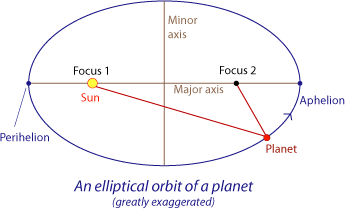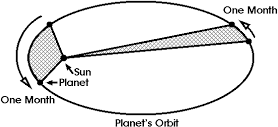Question: A ball thrown up vertically returns to the thrower after 6 s. Find
(a) the velocity with which it was thrown up,
(b) the maximum height it reaches, and
(c) its position after 4 s.
Answer:
(a) Time of ascent is equal to the time of descent. The ball takes a total of 6 s for its upward and downward journey.
Hence, it has taken 3 s to attain the maximum height.
Final velocity of the ball at the maximum height, v = 0
Acceleration due to gravity, g = −9.8 ms−2
Equation of motion, v = u + gt will give,
0 = u + (−9.8 × 3)
u = 9.8 × 3 = 29.4 ms− 1
Hence, the ball was thrown upwards with a velocity of 29.4 m s−1.
(b) Let the maximum height attained by the ball be h.
Initial velocity during the upward journey, u = 29.4 m s−1
Final velocity, v = 0
Acceleration due to gravity, g = −9.8 m s−2
From the equation of motion, s= ut + 1/2 at2
h= 29.4 × 3 + 1/2 × -9.8 × (3)2 = 44.1 m
(c) Ball attains the
maximum height after 3 s. After attaining this height, it will start falling downwards.
In this case,
Initial velocity, u = 0
Position
of the ball after 4 s of the throw is given by the distance travelled
by it during its downward journey in 4 s − 3 s = 1 s.
Equation of motion, s= ut + 1/2 gt2 will give,
s = 0 × t + 1/2 × 9.8 × 12 = 4.9 m
Total height = 44.1 m
This means that the ball is 39.2 m (44.1 m − 4.9 m) above the ground after 4 seconds.
Question: Why do we feel light on your feet when standing in a swimming pool with water up to our armpits.
Answer: It’s because of buoyant drive. Buoyant force makes you suppose lighter within the water as it normally works in opposition to the gravity and Archimedes principle.
Water exerts an upward force on all the objects immersed in it. Gravitational drive of enchantment of earth acts in downward direction however water exerts an upward drive on our physique once we standing in water , so we suppose gentle.
Question: In what direction does the buoyant force on an object immersed in a liquid act?
Answer:
An object immersed in a liquid experiences buoyant force in the upward direction.
Question: Why does a block of plastic released under water come up to the surface of water?
Answer:
For an object immersed in water two force acts on it
- gravitational force which tends to pull object in downward direction.
- buoyant force that pushes the object in upward direction here in this case buoyant force is greater than the gravitational pull on the plastic block. This is the reason the plastic block comes up to the surface of the water as soon as it is released under water.
Question: The volume of 50 g of a substance is 20 cm3. If the density of water is 1 g cm−3, will the substance float or sink?
Answer:
If the density of an object is more than the density of a liquid, then it sinks in the liquid. On the other hand, if the density of an object is less than the density of a liquid, then it floats on the surface of the liquid.
Here, density of the substance = Mass of the substance / Volume of the substance
= 50/20
= 2.5 g cm-3
The density of the substance is more than the density of water (1 g cm−3). Hence, the substance will sink in water.
Question: State and explain Kepler’s laws of planetary motion. Draw diagrams to illustrate these laws.
Answer:
- The planets move in elliptical orbits around the sun, with the sun at one of the two foci of the elliptical orbit. this law means that the orbit of a planet around the sun is ellipse and not an exact circle. An elliptical path has two foci and the sun is at one of the two foci.

- Each planet revolves around the sun in such a way that the line joining the planet to the sun sweeps over equal areas in equal intervals of time.

- The cube of the mean distance of a planet from the sun is directly proportional to the square of time it take to move around the sun.r3 ∝ T2
r3 = Constant × T2
r3/T2 = Constant
Question: Explain why school bags are provided with wide straps to carry them.
Answer: As we know that pressure is inversely proportional to area, so an increase in area means decrease in pressure.
School bags are provided with broad straps to increase the surface area in contact with the shoulders and reduce pressure on the shoulders.
If thin straps would be used, then surface area in contact with the shoulders would decrease which will lead to increase in pressure on shoulders.
Question: Explain why wooden or concrete sleepers are kept below the railway line
Answer: Wooden or concrete sleepers are kept below the railway line so that there is less pressure of the train on the ground and railway line may not sink into the ground.
Question: Explain why the kip of a swing needle is sharp?
Answer:In a sewing needle tip, as we know, the surface area is less. Hence the pressure exerted will be more.
Greater the surface area, lesser the pressure and lesser the surface area, greater the pressure. So, as the surface area is very little, the pressure erted will be more.
The tip of a needle is sharp so that due to its sharp tip, the needle may put tbe force on a very small area of the cloth producing a large pressure sufficient to pierce the cloth being stitched.
Question: Why is depression much more when a man stands on the cushion than when he lies down on it?
Answer: When a man stands on a cushion then only his two feet are in contact with the cushion. Due to this, the weight of man falls on a small area of cushion producing a large pressure. This large pressure causes a big depression in the cushion. On the other hand, when the same man is lying on the cushion, then his whole body is in contact with the cushion. In this case, the weight of man falls on a much larger area of the cushion producing much smaller pressure. And this smaller pressure produces a very little depression in the cushion.
 Class Notes NCERT Solutions for CBSE Students
Class Notes NCERT Solutions for CBSE Students





